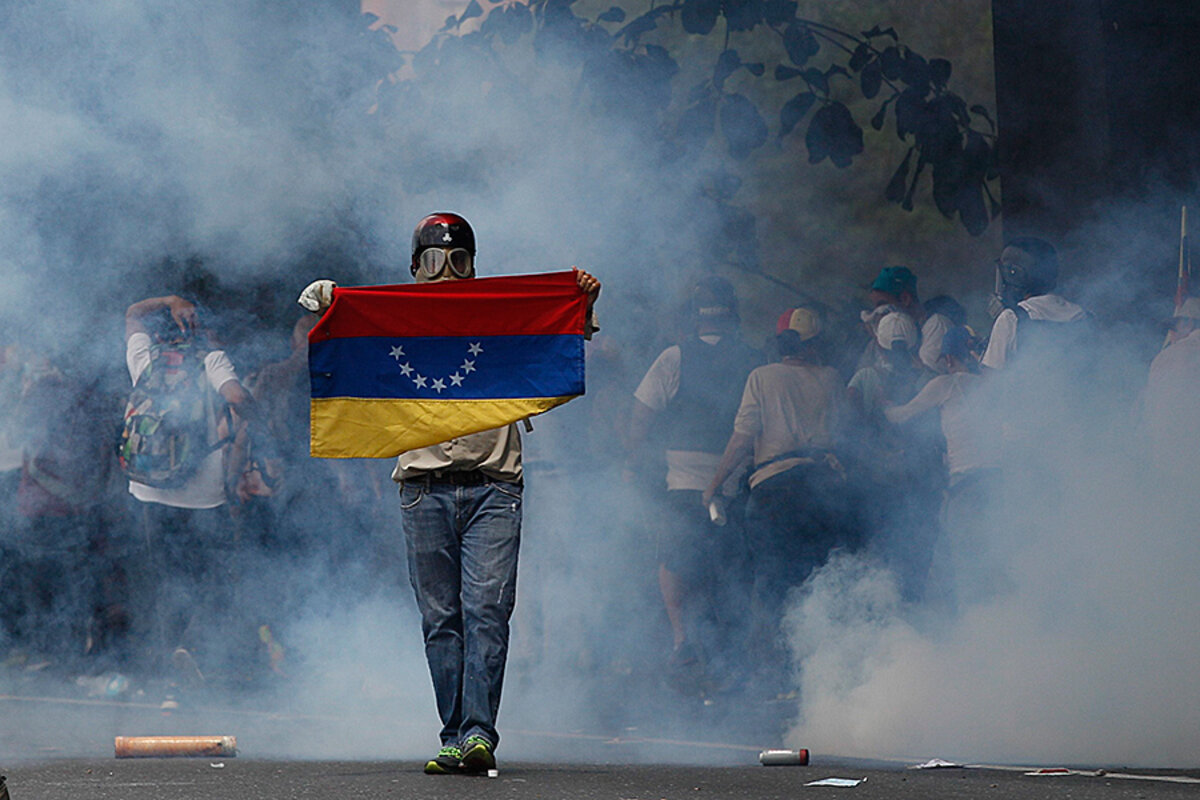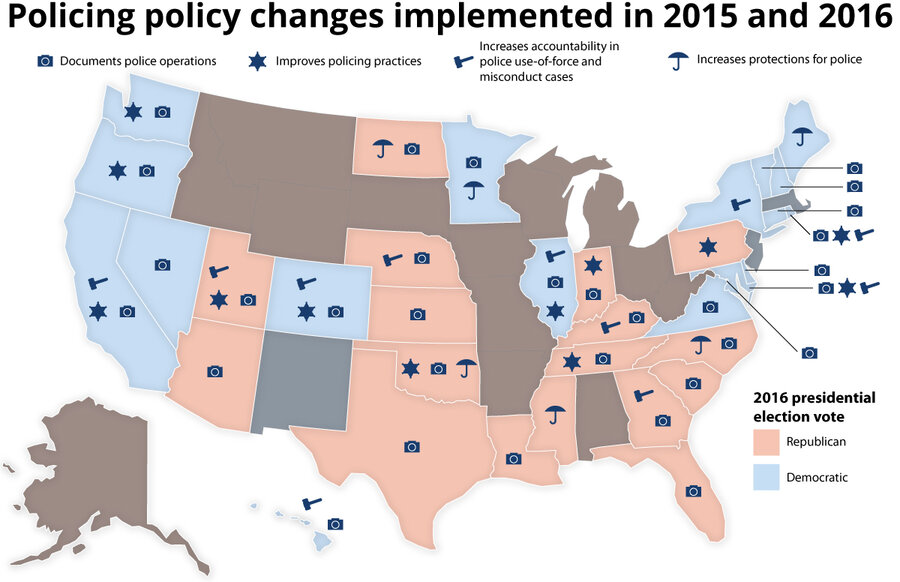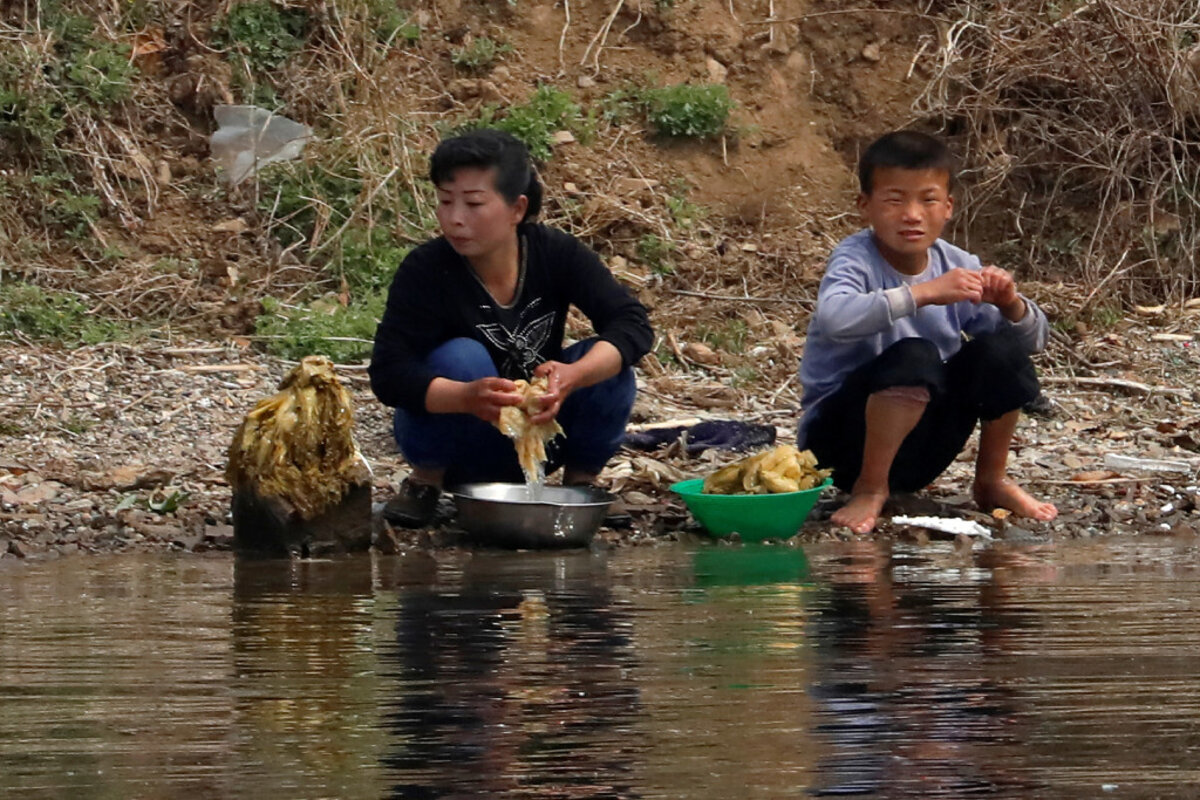Latin America: Can Trump ‘lead from behind’?
The Trump administration, which is showing some unexpected glimmers of interest in promoting human rights and democracy, may have an opportunity to do both, right in America’s backyard – with increasingly volatile Venezuela.
But if the United States is to play a role in pulling back from the brink of dictatorship and economic ruin what was once South America’s most prosperous country, it won’t be with America’s big stick, regional experts say.
Instead, it will be through cooperation and partnership with Venezuela’s steadily more concerned and outspoken neighbors and Latin America’s solid democracies – which just might hold sway with a government in Caracas that rejects US pressures as same-old “yanqui” imperialism.
“Venezuela is a good example of a crisis that will test the Trump administration’s intentions for addressing cases where democracy is under threat,” says Thomas Carothers, an international expert on democratization and US foreign policy at the Carnegie Endowment for International Peace in Washington. “But of all the regions where this is an issue, Latin America is where the US most needs to avoid unilateral steps in favor of solidarity and partnership with the region’s democracies.”
Moreover, President Trump may have an “opportunity” to press for a reversal of Venezuela’s antidemocratic spiral that President Obama did not have, Dr. Carothers says. Why? Some key South American powers have recently exchanged populist or corruption-plagued governments for more stable and regionally active ones, he says.
“The Obama administration was very cautious on Venezuela to avoid stoking anti-American sentiments,” Carothers says. “But especially now with new governments in Argentina, Brazil, and Peru, and with increased attention to Venezuela’s crisis from Mexico, there’s an opportunity for this [Trump] administration to step up its multilateral game plan and work with others on Venezuela.”
One reason for the sudden urgency in outside efforts to encourage political resolution in Venezuela is the increasingly violent turn that almost daily antigovernment demonstrations are taking. On Wednesday, Maduro sent Army troops to the streets to quell what organizers touted as the “mother of all protests.” One person, a teenage boy, died after being shot near the site of the protests, but the source of the gunfire was in dispute.
For Washington, working with allies and partners to support democracy and human rights in their region is not new, but the practice has spread as more countries adhere to democratic norms and universal rights. As one example, the US worked with a strengthened ASEAN (Association of South East Asian Nations) as a partner in its efforts to cajole Myanmar (also known as Burma) to transition from military dictatorship to emerging democracy.
Venezuela has been gradually closing democratic avenues and concentrating powers in the executive since the socialist firebrand Hugo Chávez rose to power in 1999. But where President Chávez survived on charisma and high oil prices (Venezuela has the world’s largest oil reserves) his hapless successor, Nicolás Maduro, has foundered under the oil-price collapse and an economy in free fall.
Venezuela’s sovereignty-sensitive neighbors looked the other way as Mr. Maduro strong-armed his way to increasingly authoritarian rule, packing the country’s Supreme Court and disregarding the National Assembly, which the opposition won in a landslide last year.
Signals from Trump administration
But the neighborly indifference has suddenly given way to regional activism – to Maduro’s surprise as much as anyone else’s, it seems.
After Venezuela’s Supreme Court last month grabbed legislative powers from what it considers a “rebellious” National Assembly, a regional uproar led by the long-somnolent Organization of American States prompted Maduro to reverse the court’s decision. Neighboring countries have stepped up pressure on Maduro as street protests have expanded and complaints of chronic food shortages have turned into reports of widespread hunger and steep rises in infant mortality.
It’s that environment of increased regional activism that analysts say the Trump administration could seize upon to address Venezuela’s crisis.
Already Mr. Trump and some members of his team have demonstrated somewhat keener interest in human rights issues than many foreign policy experts anticipated.
Trump surprised many by launching airstrikes in Syria over the use of chemical weapons, saying the “civilized” world could not leave such barbarity unanswered. And this week Washington’s ambassador to the United Nations, Nikki Haley, called a UN Security Council session with the sole purpose of reviewing the state of human rights globally – something the council had never done before.
On the other hand, the Trump administration skipped a session in March of the well-regarded Inter-American Human Rights Commission – the first time in two decades the US had missed a commission hearing.
Some analysts say that the way Trump proceeds on Venezuela could offer a template for how the administration will move on other crises that challenge US leadership and values, but are not at the level of national-security risk posed by North Korea or Iran.
Regional awakening
So far, the administration has not done much on Venezuela, but that may be changing.
Shortly after taking office, Trump decreed that sanctions be imposed against Venezuela’s vice president, Tareck al-Aissami, whom the US Treasury has declared a “narcotics kingpin” in a cocaine smuggling ring. In February, Trump received at the White House the wife of jailed Venezuelan dissident Leopoldo López – tweeting out a photo after the meeting and saying Mr. López should be released “immediately.”
But some see an uptick in attention on the horizon. Next week Trump will host Argentine President Mauricio Macri for a meeting the White House says will focus in part on “the deteriorating situation in Venezuela.” Last month Trump addressed Venezuela with Peru’s President Pedro Pablo Kuczynski during his White House visit. And this week State Department officials are in Peru with an agenda that includes discussion of Venezuela.
Still, some experts say they’ve seen little of substance. “You might say there’s been some new toughness towards Venezuela, but that’s mostly a matter of style and tone,” says Michael Shifter, president of the Inter-American Dialogue in Washington. “What we haven’t seen yet is any sign of a real strategy.”
What is cause for hope, Dr. Shifter says, is the same awakening among Latin American democracies that Carnegie’s Carothers cites. “The good news is that Latin American governments are starting to wake up to the horror happening in Venezuela, and are wanting to do something about it,” Shifter says. “That’s a development the US should be able to work with.”
Caracas rejects 'interventionist' call
Carothers says the US should broadly stick to two avenues for addressing Venezuela. One is to use America’s bully pulpit, “to speak up at regular intervals and especially forcefully when bad things happen,” like usurping the National Assembly. The other is to make the issue a priority of US relations with the region’s democracies.
No one is overly optimistic that Maduro will listen to his Latin neighbors and move to bring Venezuela’s crisis to a close any time soon. On Tuesday his foreign minister, Delcy Rodriguez, rejected as “interventionist” a call from 11 Latin American countries for Venezuela to “ensure the right to peaceful protest” and release a timetable for delayed regional elections.
But Shifter says strengthened relations between the US and the region and sustained evidence the Trump administration values multilateral cooperation could be a key to addressing the humanitarian stain that Venezuela has become in the region.
“I think there’s a chance to pull Venezuela out of this tragedy if these influential neighboring countries can really come together to increase pressure on the government and try to assist with some sort of transition and political resolution that includes elections,” Shifter says.
“The US should be working behind the scenes to bring about and support this coalition of countries,” he adds, “but it shouldn’t be leading the charge. That for sure won’t work.”



















